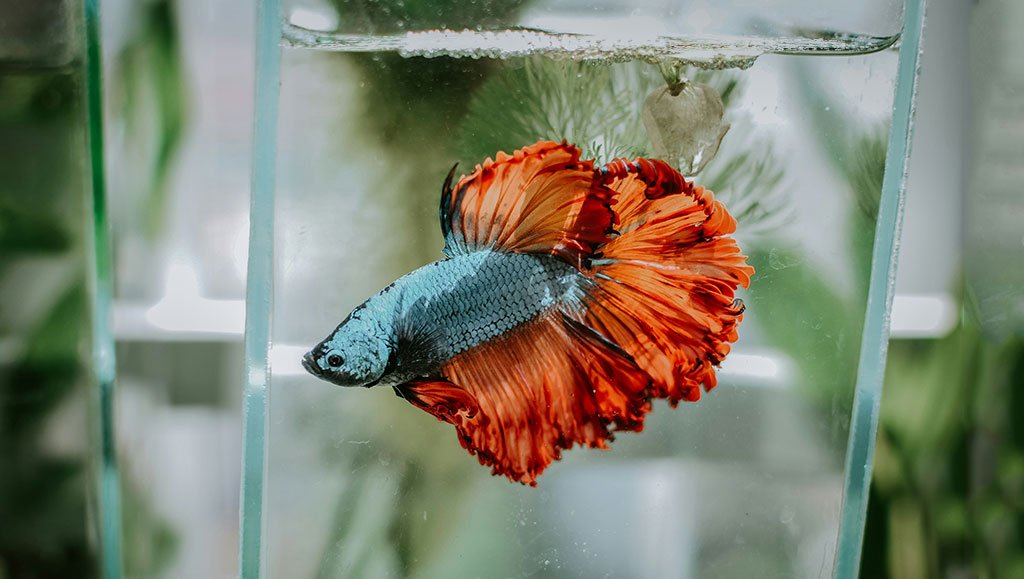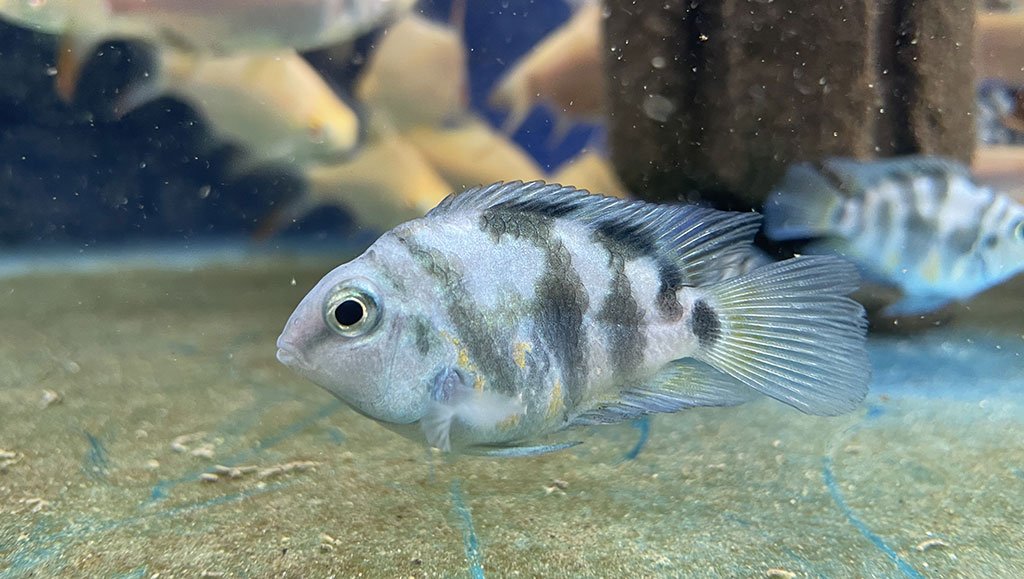As an avid betta fish enthusiast, I have always been fascinated by the mysterious bubble nests that these beautiful creatures create. Betta bubble nests are intricate structures made of bubbles that float on the surface of the water, built by male bettas.
In this in-depth guide, I will delve into the world of betta bubble nests, exploring their purpose, biology, and significance in breeding.
Betta Bubble Nests: An In Depth Analysis
Betta bubble nests serve multiple purposes in the life of these extraordinary fish. The primary function of a bubble nest is to provide a safe haven for betta eggs.
The male betta constructs the nest meticulously, ensuring that it is sturdy and well-maintained. The nest’s bubbles serve as a barrier to keep predators and water temperature changes away from the eggs.
Additionally, bubble nests also play a role in courtship and mating. Male bettas use their bubble nests to attract female bettas during the breeding process. The nest serves as a visual display of the male’s health and vitality, showcasing his ability to provide a safe environment for their offspring.
Female bettas are instinctively drawn to males with well-constructed bubble nests, as it signifies their potential as nurturing partners.
The Biology Behind Betta Bubble Nests
The creation of a betta bubble nest is a fascinating biological process. It begins with the male betta building a foundation of bubbles using saliva and mucus secretions. These bubbles are then carefully arranged into a floating structure.
The proteins in the saliva help to strengthen the bubbles, ensuring their durability. The male betta continues to add bubbles to the nest until he deems it sufficient for the purpose of breeding.
The presence of the bubble nest triggers the female betta’s release of eggs. The male betta then fertilizes the eggs and collects them in his mouth, spitting them into the bubble nest for safekeeping.
The nest acts as a nursery for the eggs, providing them with a stable and oxygen-rich environment. The male betta diligently tends to the nest, repairing any damaged bubbles and ensuring that the eggs receive proper care.
How to Identify a Betta Bubble Nest
Identifying a betta bubble nest is relatively straightforward once you are familiar with their appearance. Bubble nests typically appear as clusters of small bubbles floating on the surface of the water.
Depending on the betta male’s abilities and preferences, they can differ in size and shape. However, it is important to note that not all male bettas build bubble nests, as the behavior can vary among individuals.
To determine whether a bubble nest is actively being maintained, you can observe the presence of the male betta near the nest. If the male is seen adding bubbles or tending to the nest, it indicates that it is still in use.
A well-maintained bubble nest will have a solid structure and clear bubbles, indicating the male betta’s dedication to its construction.
Factors That Influence the Creation of a Betta Bubble Nest
Several factors can influence the creation and quality of a betta bubble nest. Water temperature plays a crucial role, as bettas prefer warmer water for breeding.
Maintaining a consistent temperature between 78°F and 82°F (25.5°C and 27.8°C) is ideal for encouraging bubble nest building. Proper nutrition is also essential, as a healthy and well-fed betta is more likely to engage in nest construction.
The presence of a suitable breeding environment is another important factor. Male bettas require ample space, preferably in a tank with minimal water flow.
Providing hiding spots, such as plants or caves, can also stimulate nest-building behavior. Additionally, the presence of a receptive female betta can greatly influence a male’s motivation to construct a bubble nest.
The Role of Male Bettas in Building Bubble Nests
Male bettas are the architects behind the creation of bubble nests. This behavior is instinctual and driven by their natural reproductive instincts.
The male betta’s ability to build a well-structured bubble nest serves as a display of his fitness as a potential mate. A strong and healthy male betta will invest time and effort into constructing an impressive nest, attracting the attention of female bettas.
The process of building a bubble nest begins with the male betta exploring his environment and selecting a suitable location. Once a location is chosen, the male will start by releasing saliva and mucus into the water, creating bubbles.
Using his mouth and body, he carefully arranges the bubbles into a floating structure. The construction process may take several hours or even days, depending on the male betta’s diligence and skill.
The Significance of Betta Bubble Nests in Breeding
Betta bubble nests play a vital role in the breeding process, ensuring the survival of the offspring. Once the female betta releases her eggs, the male betta fertilizes them and collects them in his mouth.
The eggs will stay in the bubble nest until they hatch after he carefully spits them inside. The bubble nest provides a stable and oxygen-rich environment for the eggs, protecting them from potential threats.
The male betta continues to monitor the bubble nest, tending to any damaged bubbles and removing any unhatched or unhealthy eggs.
This active involvement in nurturing the eggs showcases the male’s dedication to the reproductive success of his offspring. The presence of a well-maintained bubble nest is an encouraging sign that the breeding process is progressing as expected.
Caring for Betta Eggs in a Bubble Nest
Once the eggs are safely nestled in the bubble nest, it is crucial to provide the male betta with a stress-free environment. Avoid any sudden disturbances or excessive handling of the tank, as this can cause the male to abandon the nest or unintentionally harm the fragile eggs.
Maintain a consistent water temperature and quality to ensure optimal conditions for the developing embryos.
It is important to note that not all eggs will successfully hatch. Some may be infertile or develop abnormalities, which the male betta will remove from the nest.
As the eggs near the hatching stage, you may notice the male betta becoming more protective and vigilant. It is essential to continue providing proper nutrition to support the male’s energy levels during this critical period.
How to Encourage Betta Fish to Create Bubble Nests
There are a few things you can do to help your betta fish construct bubble nests. Start by providing a suitable tank setup with ample space and minimal water flow.
Adding live or artificial plants can create hiding spots and mimic the natural habitat of bettas. Providing a healthy diet and keeping the water temperature within the suggested range will also encourage nest-building activities.
Introducing a receptive female betta to the tank can be a powerful motivator for the male to construct a bubble nest. However, it is important to carefully monitor their interactions to prevent any aggressive behavior.
Patience is key, as not all bettas will immediately engage in nest building. Observe your betta’s behavior and make adjustments to the environment as needed to create optimal conditions for nest construction.
Common Mistakes That Can Destroy a Betta Bubble Nest
While betta bubble nests are fascinating structures, they can be delicate and easily destroyed if not handled with care. One common mistake is excessive water movement, which can cause the bubbles to break apart or disperse.
Avoid using strong filters or air stones near the bubble nest to minimize disturbances. Additionally, sudden temperature fluctuations or poor water quality can also negatively impact the nest.
It is essential to resist the temptation to touch or disturb the bubble nest. Physical contact can cause the bubbles to collapse, potentially harming the developing eggs. Similarly, avoid introducing any foreign objects into the tank that may disrupt the structure of the nest.
You can maintain the integrity of the bubble nest and encourage your bettas to reproduce successfully by providing a quiet and steady environment.
Signs of a Happy and Healthy Betta Bubble Nest
A happy and healthy betta bubble nest can be identified by certain characteristics. Firstly, the nest should be well-constructed, with clear and intact bubbles.
The bubbles should be arranged in a compact and organized manner, indicating the male betta’s attention to detail. The presence of the male betta actively tending to the nest is a positive sign, demonstrating his commitment to the reproductive process.
Additionally, the coloration and behavior of the male betta can indicate the condition of the bubble nest. A vibrant and active betta with fins held erect and a display of bright colors suggests a healthy and content fish.
Conversely, a stressed or lethargic betta may neglect the bubble nest or display signs of aggression towards it. Regular monitoring of the nest and the betta’s overall well-being will help ensure the success of the breeding process.
Female Bettas and Bubble Nests: Understanding Their Behavior
While male bettas are primarily responsible for building bubble nests, female bettas also play a role in the breeding process. Female bettas are instinctively drawn to males with well-constructed bubble nests, as it signifies their ability to provide a safe environment for their offspring.
They may show interest in the nest by inspecting it or displaying submissive behavior towards the male betta.
Female bettas do not contribute directly to the construction or maintenance of bubble nests. However, they may interact with the nest during courtship, showing their willingness to mate by swimming close to the structure.
It is important to note that not all female bettas will exhibit interest in the bubble nest, as their behavior can vary among individuals. Encouraging effective reproduction requires paying attention to their behavior and creating an atmosphere that is favorable for breeding.
Why is My Betta Making a Bubble Nest?
If you’ve ever observed your male betta meticulously constructing a delicate raft of bubbles on the water’s surface, you may have wondered what drives this behavior. The primary reason behind the creation of bubble nests is reproduction.
Male bettas build bubble nests as a form of courtship behavior to attract females for mating. Once fertilized, these nests provide a secure sanctuary for the eggs, shielding them from any danger. It is important to note that not all male bettas will build bubble nests.
Some may not exhibit this behavior due to various factors such as age, health, or individual temperament. However, a betta’s ability to create bubble nests is often seen as a sign of their overall well-being and readiness to breed.
Should You Remove Betta Bubble Nests?
Once your male betta has constructed a beautifully intricate bubble nest, you may be tempted to remove it, thinking it serves no purpose or simply for aesthetic reasons. However, it is crucial to resist this urge. Bubble nests are of immense importance to bettas, and removing them can cause unnecessary stress and disruption in their environment.
Bubble nests play a vital role in the eproductive cycle of bettas. By removing the nest, you not only interfere with their natural behavior but also remove a potential breeding ground for future generations of these majestic fish. Therefore, it is recommended to leave the bubble nest undisturbed, allowing the betta to carry out its natural instincts.
Do Bettas Make Bubble Nests When Stressed?
Bettas are known for their resilience, but like any living creature, they can experience stress. It is important to understand that stress in bettas can lead to various health issues, including a decrease in bubble nest production. Therefore, if your betta is not building bubble nests as it typically would, it could be an indication that something is amiss in its environment.
Stress factors that can impact a betta’s bubble nest-building habit include limited nourishment, low water quality, and small living quarters. It is essential to ensure that your betta’s tank is clean, properly maintained, and provides ample space for swimming. By addressing these stressors, you can help your betta regain its natural behavior and potentially resume bubble nest construction.
Do Betta Eggs Need a Bubble Nest?
The answer to this question is both fascinating and complex. While bubble nests are traditionally associated with protecting and nurturing betta eggs, it is not an absolute necessity. In the wild, male bettas construct bubble nests to provide a safe environment for the eggs to develop. However, in captivity, bettas have adapted to alternative methods of egg care. It is worth noting that not all bettas will care for their eggs in a bubble nest.
Some males may prefer to hold the eggs in their mouths or create makeshift nests using other materials within the tank. Additionally, female bettas are also capable of caring for their eggs without the presence of a bubble nest. Therefore, while bubble nests are a natural behavior, they are not the sole means of ensuring successful egg development in bettas.
Conclusion
In conclusion, betta bubble nests are remarkable creations that showcase the intricate behaviors and reproductive strategies of these stunning fish. Understanding the purpose, biology, and significance of bubble nests is essential for betta fish enthusiasts and breeders. By providing the optimal conditions and care, you can encourage your bettas to engage in nest building, ensuring the survival of their offspring and experiencing the beauty and wonder of these mesmerizing structures.
Are you fascinated by the world of betta fish and their bubble nests? Explore our collection of betta fish care guides and products to provide the best possible environment for your beloved bettas. Witness the magic of betta bubble nests and unlock the secrets of successful breeding.





Pingback: Betta Bubble Nest Guide: Signs & Care Tips